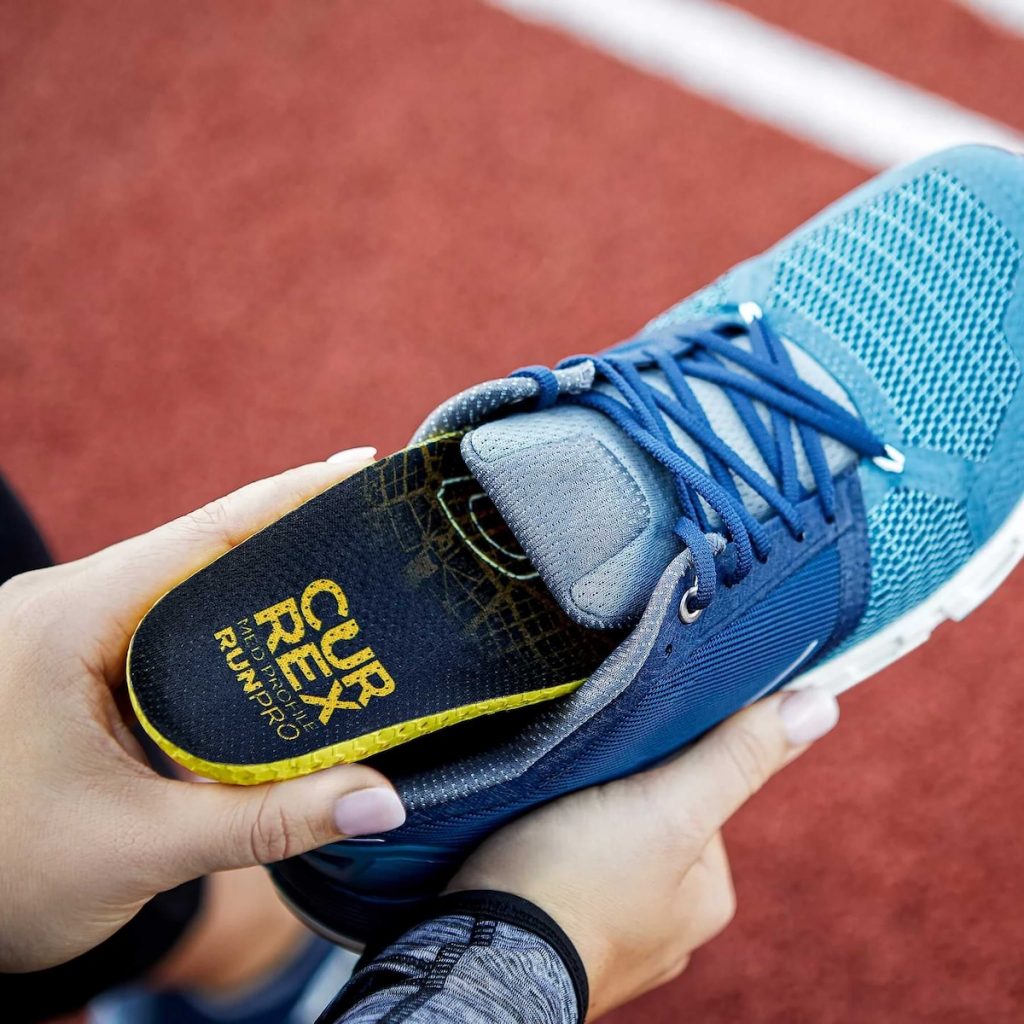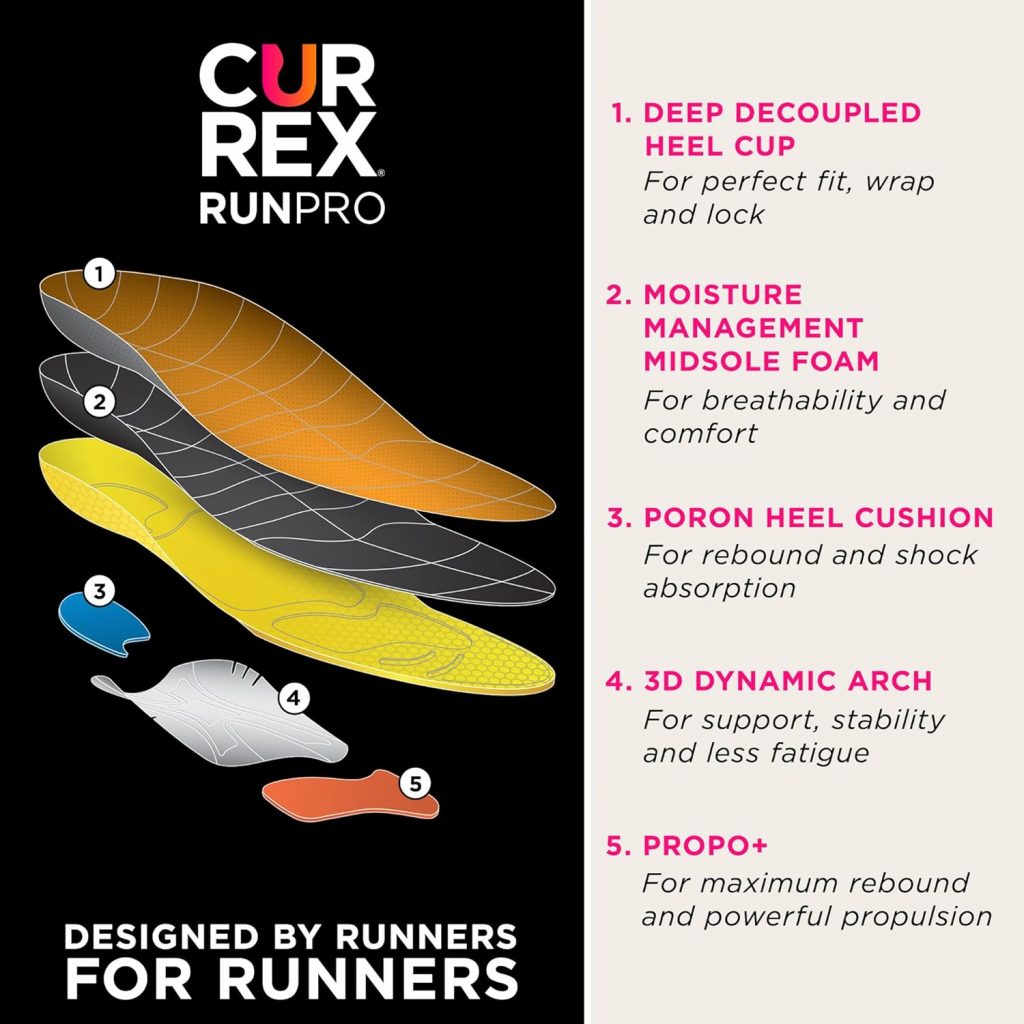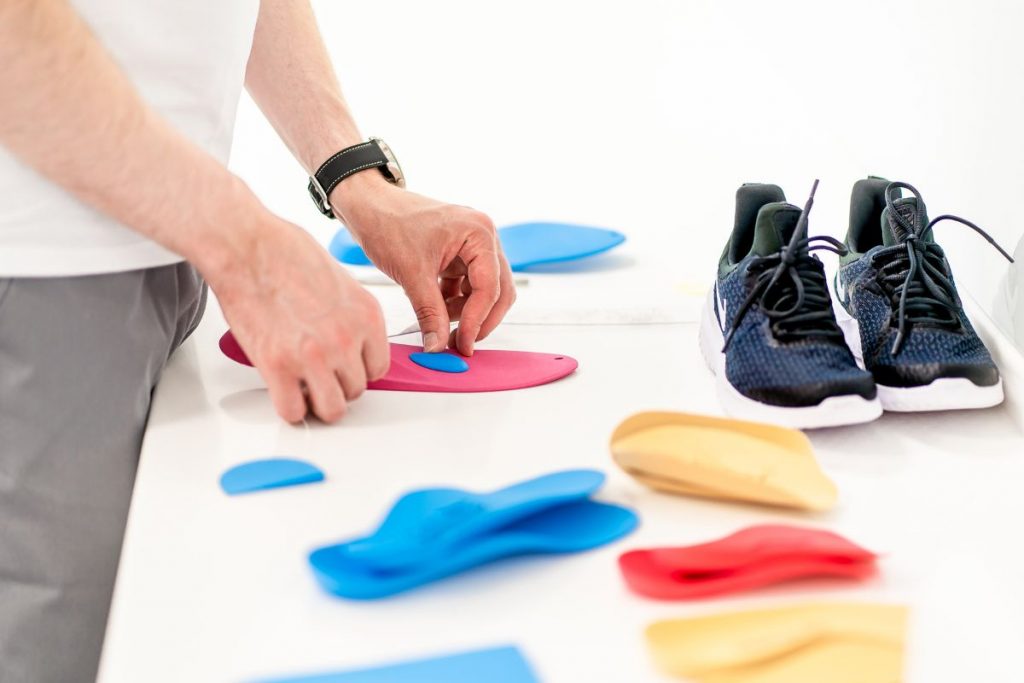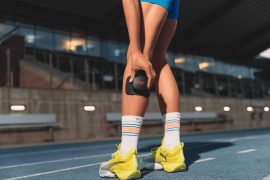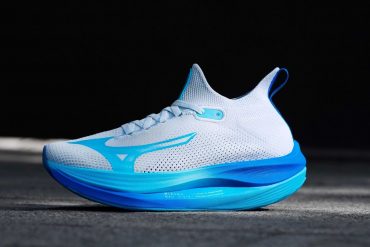Running enthusiasts know that not all shoes are created equal. A common denominator, however, is the often ineffective insoles that come with these shoes. They might offer temporary comfort when tried on in-store, but they typically fall short in promoting foot health or enhancing performance. This is where CURREX insoles stand out as the best insoles for running shoes on the market, redefining what it means to have supportive, performance-boosting insoles.
I’m flat-footed myself and have periodically used insoles to improve my foot placement. A big problem with specially made foot inserts is that they are often too heavy and take away some of the best features in running shoes.
CURREX insoles are designed to transform your running experience. They offer flexible support and shock-absorbing cushioning from heel to toe. This design is not just about comfort; it’s about reducing fatigue, preventing common running injuries like shin splints, and boosting performance, no matter where you run – be it on rugged trails or smooth tracks.
The unique aspect of these insoles is their ability to fold at the flex point, allowing for maximum flexibility and movement synchronization.
Advanced Technology for Enhanced Support
The standout feature of CURREX insoles is their 3D Dynamic Arch Technology paired with Multiprofile Arch Support. These insoles are available in low, medium, and high arch support profiles to cater to different foot types.
The deep decoupled heel cup is engineered to provide a snug fit, wrap, and lock the heel in place. This results in improved stability, reduced pressure, and an overall perfect fit, tailored to each runner’s unique foot structure.
Engineered to Energize Your Running
Another remarkable aspect of CURREX insoles is how they are engineered to energize your running. They incorporate rebound cushioning and controlled power transmission that aid in faster regeneration and powerful propulsion with every stride.
The zero-heel drop design ensures a great fit in most running shoes and optimizes motion for all types of running foot strikes. For an even more customized fit, these insoles can be trimmed.
Superior Moisture Management & Breathability
The top layer of CURREX insoles features a mesh design and PORON premium foam, which work together to manage moisture effectively. This technology helps keep the feet dry and ensures that running shoes remain fresh throughout the exercise.
It’s recommended to replace your CURREX insoles after 500+ miles or 12 months, whichever comes first, to maintain optimal performance and hygiene.
Made for What Moves You
What sets CURREX apart is its dedication to creating a full line of activity-specific insoles. These insoles are not just for running; they’re designed to improve movement and comfort in whatever activity you or your family enjoys, from a regular workday to adventurous weekends.
By focusing on enhancing comfort, CURREX insoles lead to better performance and more enjoyment in all your activities.
In conclusion, CURREX insoles emerge as the best insoles for running shoes on the market due to their unique blend of technology, comfort, and customization. They are not just an addition to your running gear; they are an essential component for anyone serious about their foot health and performance.
What to Consider When Buying Insoles for Running Shoes?
When buying insoles for running shoes, there are several important factors to consider to ensure comfort, support, and improved performance. Here’s a detailed guide:
- Foot Arch Type: Identify your arch type – high, medium, or low. Different insoles cater to different arch types, providing the appropriate level of support. For instance, high arches might need more cushioning under the arch.
- Insole Material: The material of the insole impacts its cushioning and durability. Common materials include foam, gel, and cork. Foam offers good cushioning and support, gel provides excellent shock absorption, and cork offers a balance of support and comfort.
- Size and Fit: Ensure the insole fits your shoe size. Insoles come in full-length, 3/4-length, and heel inserts. Full-length insoles are best for complete support, while 3/4-length or heel inserts are more focused on specific areas like the arch or heel.
- Footbed Type: There are different footbed constructions, such as rigid, semi-rigid, cushioned, and no arch support. Rigid and semi-rigid footbeds offer more structural support, while cushioned footbeds focus on comfort.
- Running Style and Intensity: Your running style and the intensity of your workouts can dictate the type of insole you need. If you’re a long-distance runner, you might benefit from more cushioning, while sprinters might prefer a firmer insole for better energy transfer.
- Purpose: Consider why you need insoles. Is it for extra cushioning, support, or to correct a specific foot problem like overpronation or supination? Insoles designed for specific issues can provide targeted relief and improve running mechanics.
- Breathability and Moisture Control: Good insoles should allow your feet to breathe and manage moisture effectively. This helps in reducing the risk of blisters and bacterial growth.
- Durability and Maintenance: Consider the durability of the insole and how easy it is to clean. Some insoles are machine washable, while others require hand cleaning.
- Brand and Price: Research different brands and compare prices. More expensive doesn’t always mean better. Read reviews and see what other runners recommend.
- Consult a Professional: If you have specific foot issues or a unique running style, it might be beneficial to consult a podiatrist or a professional at a specialty running store for recommendations.
Remember, the right insoles can significantly enhance your running experience, but they are not a cure-all for every foot problem. It’s always a good idea to address any underlying issues with a healthcare professional.
FAQs – The Best Insoles for Running Shoes
Insoles in running shoes provide several benefits including enhanced comfort, improved support, better foot alignment, reduced risk of injuries, and increased endurance. They can help in distributing pressure evenly across the foot, thus reducing stress on the joints and muscles.
To choose the right insole, consider your foot arch type (flat, neutral, or high arch), the fit of your running shoes, and your running style. Look for insoles that offer the right balance between cushioning and support. It’s also important to consider the material of the insole for breathability and durability.
Yes, certain insoles are designed to correct overpronation (where the foot rolls inward excessively) or supination (where the foot rolls outward). These insoles provide targeted support to stabilize the foot and promote a more natural running gait.
The lifespan of running shoe insoles varies based on the material, usage, and the runner’s weight. On average, it’s recommended to replace them every 6 to 12 months, or whenever you start to notice signs of wear and reduced support.
Yes, there are insoles designed for different types of running. For instance, trail running insoles might offer more rugged support and shock absorption, whereas insoles for track running might focus on lightweight cushioning and responsiveness.
Insoles can be very helpful for runners with conditions like plantar fasciitis. They provide extra cushioning and support to the heel and arch, reducing strain on the plantar fascia. However, it’s important to consult with a healthcare professional for a comprehensive treatment plan.



